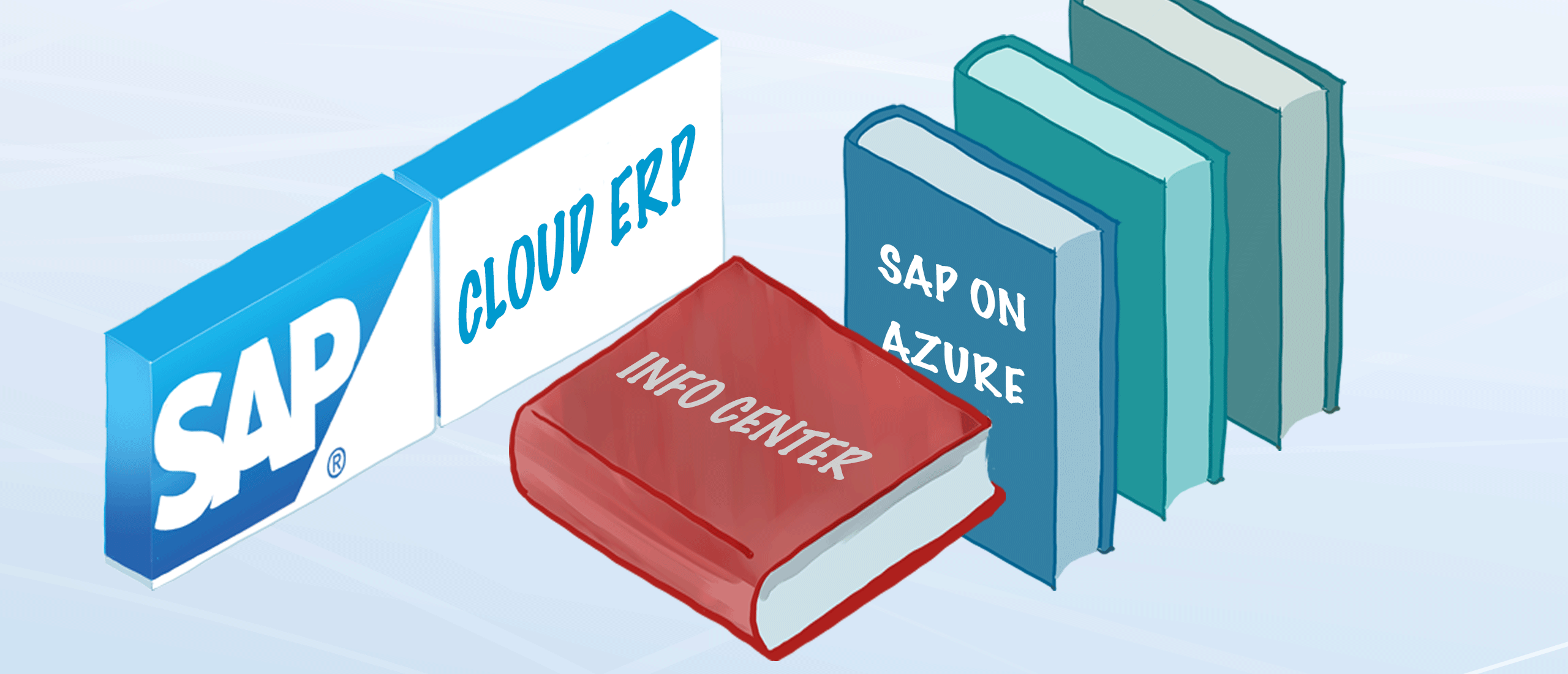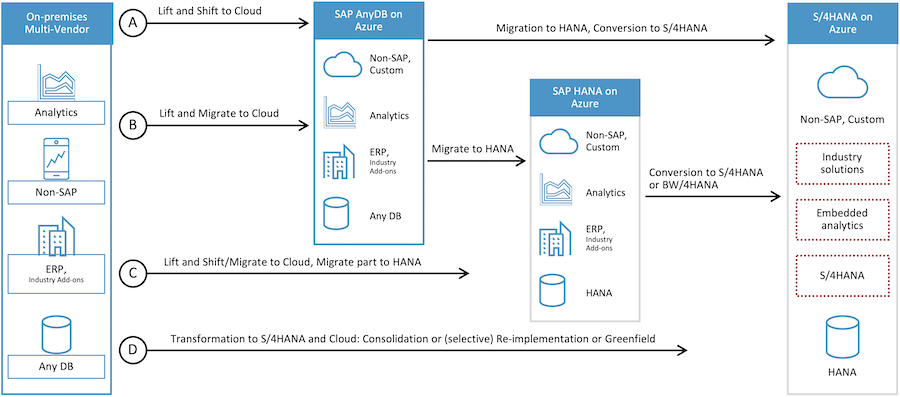SAP on Azure | Introduction
SAP on Azure | 10 Facts
SAP on Azure | Fundaments
SAP on Azure | Workloads
SAP on Azure | Security | Identity and Access Management (IAM)
SAP on Azure | Scheer Services on Azure

For companies with SAP and any non-sap systems, there are various options for completing the road to Cloud. Below is a schematic representation of the various options:
[caption id="attachment_216899" align="aligncenter" width="900"] SAP on Azure migration options[/caption]
SAP on Azure migration options[/caption]
Important aspect in the elaboration of these choices are:
As a solution, a combination of IaaS, PaaS or even SaaS can be chosen in which complete components are fully transferred to the Cloud.
This concerns the different "layers" of the Enterprise Application structure:
